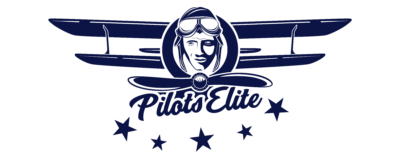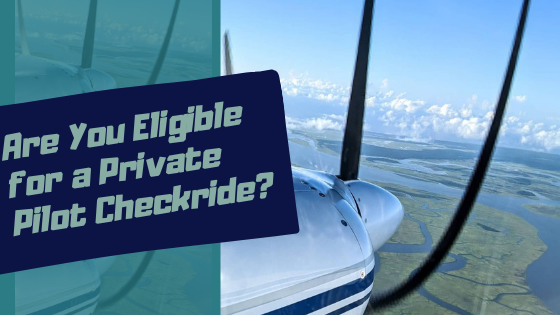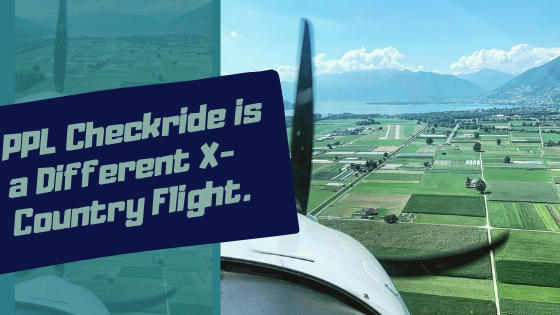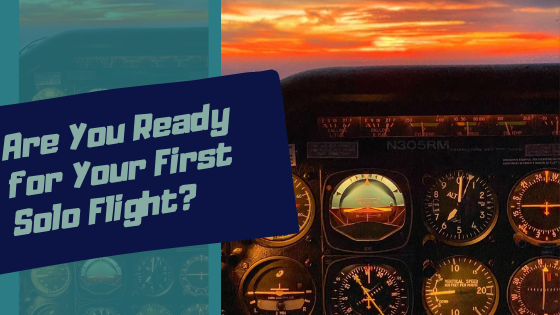Create & follow a system to study for the private pilot written exam.
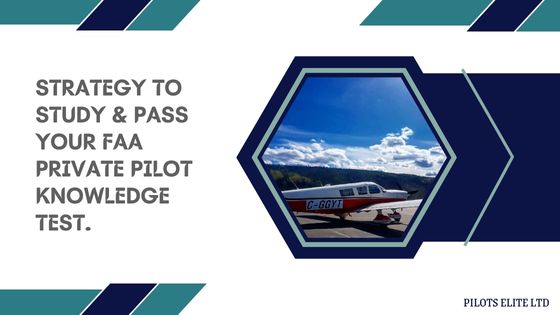
You had your discovery flight, and flying an airplane seemed simple, but you don’t know where to begin studying for the FAA private pilot written exam.
Without passing the private pilot written exam (FAA knowledge test), flying an airplane as a hobby will remain a dream forever.
Does that mean you give up on your dreams?
90% of the student pilots pass their private pilot written exam on their first take. You can be one of them by consistently following a system.
However, a single process doesn’t fit all students. Hence, this article provides a guideline, and you must create your own study strategy.
By the end of this article, you’ll know where to begin studying and which resource requires more attention.
To study for the exam, you must know the format and what to expect.
The private pilot written exam has 60 questions. It should take you 2 hours and 30 minutes to complete.
You’ll get 60 multiple-choice questions. Some are simple fundamental questions, and others are scenario-based.
Regardless, the exam would be easy to pass because you’ll have multiple choices to select the correct answer.
The passing score is 70%. This means that you must answer 42 questions correctly.
Answering 42 questions correctly in 2.5 hours is not a significant challenge. Hence, it would be best to achieve a 90% score.
For more details about the private pilot written exam, check the FAQ here: Private pilot written exam.
The most important question is where to begin learning for this straightforward exam.
Where should you begin studying for the private pilot written exam?
The written exam tests a student’s knowledge of multiple aeronautical subjects. The exam covers questions on:
- Regulations: 3-9 questions;
- Accident reporting: 3-6 questions;
- Performance charts 3-6 questions;
- Radio communications: 3-6 questions;
- Weather: 3-6 questions;
- Safe and efficient operations: 3-9 questions;
- Density altitude performance: 3-6 questions;
- Weight and balance 3-6 questions;
- Aerodynamics, powerplants, and aircraft systems: 3-6 questions;
- Stalls and spins: 3-6 questions;
- Aeronautical decision-making: 3-6 questions;
- Preflight actions: 3-6 questions.
The above chart explains that we must be thoughtful about our learning process. There are many topics and it takes a lot of time to learn them.
We must begin by creating a practical study plan and having realistic goals.
Study plan:
My suggestion is to study for 1 hour every day. A private pilot license is not complicated, and the subjects are less complex.
Studying for a private pilot license will initially seem overwhelming, but gradually, it will become easier.
Hence, I said I would study for only an hour. It may become monotonous if you initially plan to explore aeronautics for hours.
You’ll also find studying longer isn’t helping because you can barely remember anything after leaving your desk.
Thus, study to learn but not memorize.
Once you get used to aeronautical subjects, you’ll notice aeronautical studies are fun to read. Eventually, you can spend 2-3 hours studying without tracking the time.
I also noticed most of my readers are PART 61 students and don’t have excess spare time. Therefore, planning one hour to study daily is reasonable for busy people.
Buy only the resources you need.
You decide to study for an hour daily, but which materials do you need?
There are plenty of resources available online and in offline pilot shops. Do you get all of them to study for the private pilot written exam?
Bear in mind you need knowledge of various subjects to prepare for the exam, and you don’t know which combination of questions you’ll see.
Thus, be wise about choosing your private pilot study materials. Don’t buy every book on the market.
Instead, read one book thoroughly and follow one online ground school course.
Ask your flight instructor for recommendations or fellow pilots to borrow one of their favorite books.
Too many books on your desk can overwhelm you and prevent you from studying. Similarly, looking at several resources can cause mental fatigue.
Once you finish your ground school course and read a book, you may want to acquire more data, and only then should you get a second book.
Using multiple resources to prepare for the private pilot written exam has benefits. However, initially, it begins with only two resources.
Find a suitable online private pilot ground school that you can use to study at your own pace.
When you finish the online course, you’ll learn much about aviation, aerodynamics, meteorology, navigation, and aircraft systems.
After this, get yourself a private pilot handbook.
There are various private pilot handbooks/manuals available in the market. But I always recommend student pilots choose either one of these:
- Private pilot handbook by Rod Machado;
- Jeppesen private pilot manual.
Both these books are excellent. It’s easy to read, and there are hundreds of images to make reading fun and illustrations to clarify topics.
The benefit of reading books is that you’ll get more facts about the matters you learned from an online private pilot grounds school course.
Reading a book means you’re at stage two, mastering subjects relevant to private pilot licensing.
You don’t have to memorize everything in the book. Read the book thoroughly and absorb the information. Whatever you learn by reading a book can help you during your exam.
A book helps you connect several dots you knew existed but didn’t know how to join them.
I believe by now you know why I said you should take the course first and then read the book.
Many online communities recommend reading every book you can and borrowing from your friends if you can’t afford to buy. I say acquire as much information as possible from a single resource before moving on to the next one.
Our time is limited, and we must be smart about our choices. The two books I mentioned above are very detailed in breadth and depth.
If you utilize the information in either of these books, you don’t have to look for a different source to collect data.
Implying a study strategy will contribute to passing the private pilot written exam.
I pointed out essential resources to study for the exam. Now you know how to manage time and begin looking for the written exam.
It would be best to have effective strategies to learn quickly and instill knowledge in your intellect forever.
Some students are visual learners, some are listeners, and others are readers. Which one are you? Therefore, it’s up to you to create your strategy. I can only share ideas, but you have to do the work.
There are all types of options available for student pilots:
- Audiobooks;
- Ebooks;
- Online ground school;
- Physical books.
LI will share my preferred study method for giving private pilot trainees a guideline in this article.
You should watch the private pilot ground school course for one hour daily and rewatch the lessons you don’t understand to clarify.
Don’t move to the next lesson without clarifying the current topic.
Getting used to the online classes would take some time, but eventually, you’ll find aeronautical studies interesting.
Allocate one hour every day, six days a week.
If you’re dedicated to studying, a forty-hour course will take no more than a month. However, completing the course in a short time has some downsides.
Often, a student’s goal is to finish the course quickly. As a result, the student obliviously continues to watch the lessons. Naturally, the students barely remember what they observed in the online course.
Thus, follow the daily one-hour studying technique.
Despite taking online ground classes mindfully for one hour every day, you will discover aeronautical matters for which you need further clarification and understanding.
Perhaps you would become motivated to dig deeper into a topic.
That’s when your book would come into play. Use a book’s content to identify the chapter where a specific subject is discussed.
During your online ground school, identify the subjects you struggle to understand the most. Emphasize learning more about that particular chapter from the book you have.
Go to that particular page and read it thoroughly. You don’t have to read the entire book, but be bright only to read crucial subjects.
In the topmost section of this article, I mentioned the subjects and the approximate number of questions you’ll see in the private pilot written exam.
Use this free ground school training syllabus to study what matters to get a private pilot license.
Do you have a hard time memorizing something?
Make notes about the particular topic and periodically get back to learning. Use flashcards to memorize.
Lastly, most online private pilot ground schools include quizzes at the end of each lesson. Take the quizzes to understand your weaknesses and return to learning from the book.
Use the same method to identify issues and then learn.
If you consistently follow this process, you’ll notice you learned so much in two months and feel confident to take the FAA written exam.
My study method includes a combination of visual learning and staying engaged by reading.
However, the last obstacle would be preparing for the exam at this point.
I mentioned earlier that the private pilot written exam (knowledge test) has 60 multiple-choice questions you must correctly answer in 2.5 hours.
Are you ready to take on the challenge?
Familiarize yourself with the questions you would see and practice written exams.
Assuming you have completed online ground classes, read your book, and are confident enough to take the exam,
Indeed, you’re ready to pass the exam. However, our goal is for you to achieve at least 90%.
Student pilots mostly fail the private pilot written exam because they get confused seeing all types of unexplored questions in the exam and can’t finish answering the multiple-choice questions on time.
Thus, it would be best if you practiced using a test prep to solve similar problems on your exam day.
The test prep can be an online tool or a test prep book. A test prep tool can be paid or free.
Which medium you choose depends on your preference. However, in this article, I discussed a test prep book that comes with a test prep software CD.
You can use the textbook or the software on your desktop, whichever you find suitable.
Back in the day, students memorized the answers to questions from a test prep textbook and then took the exam. They used to pass, too.
Today, this method is prevalent among student pilots outside the USA.
However, following that system doesn’t work well for FAA exams anymore.
FAA frequently updates its question database to discourage student pilots from memorizing the answers.
Therefore, it has never been so crucial to learn each subject’s fundamentals and underlying concepts from online ground school and using textbooks, unlike today.
You can answer any broad or simple MCQ questions if you comprehend a topic entirely.
If you pursue the traditional route of memorizing answers from a test prep book, it can be the cause for your failure in an exam.
Use the test prep to accustom yourself to the exam environment. For this purpose, the online test prep tools work best. But if you consider test prep textbooks suitable, get yours from a pilot shop.
Use the test prep only to evaluate your knowledge of specific subjects.
Lastly, practice and practice using test prep. The more you practice using test prep, the better you’ll be ready for the private pilot written exam.
If you can’t answer a question correctly from your test prep book, refer to the section to learn why your answer is incorrect. Understand the reason behind a correct answer.
Studying for the private pilot written exam involves patience, effort, and dedication.
However, following this post’s guidelines and using the materials discussed here, you can pass your private pilot written exam with a 90% score.
Furthermore, you would get excellent results on your first take.
If you’re reluctant to spend on a test prep textbook or software, you can check out this free tool by Sporty’s. All you have to do is sign up for their platform, and you’ll have access to the private pilot test prep.
RELATED: Free Private pilot license practice tests.
Lastly, your goal must be to pass the exam and learn about flying while studying to become a competent and safe pilot.
The more you learn the, more competent you will become.
If you can apply everything you learn during the course, you’ll notice your flight training has become more straightforward, and you can grasp flying techniques swiftly.
Preparation for the exam day.
Go through the test prep book the night before the exam if you think you have to. However, in most cases, it’s best to relax and avoid studying your textbooks.
Whatever you learned during the last two/three months is instilled in your memory. You may think you have forgotten something, but you haven’t.
Once you sit to take your exam with a clear mind, you will notice how easy the exam seems and find the answers to all the questions.
There would be scenario-based questions that you can solve by remembering what you have learned.
If you can’t answer a question, move on to the next one.
Focus on answering the more straightforward questions as quickly as possible and then spend time identifying the correct answers to the complex questions.
Conclusion:
Take this article as a guideline and create a suitable strategy for becoming a private pilot. Don’t buy several books and subscribe to multiple courses to overwhelm yourself.
To increase your chances of passing the private pilot written exam, stick to one course and one book, preferably from the same author.
It’s essential to set a deadline. Select a date on which you will take your FAA private pilot knowledge test. The best practice is to develop a date for three months from the day you begin studying for your exam.
Likewise, following the process mentioned in this article will teach you to be an intelligent and competent pilot.
RESOURCES:
